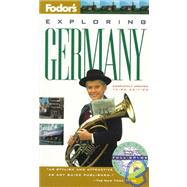
| My Germany, by Professor Werner Niefer My Germany | |
| Germany Is... A Paradox Food Music Health and Fitness Politics and Economy Environment | |
| The Film Industry Top People Germany Was... Evolving Strife-torn | |
| A Rising Power Reunited Literature and Philosophy Art and Architecture | |
| Berlin Northwest Germany | |
| The Rhineland Central Germany Eastern Germany Southwest Germany Northern Bavaria Munich and the Alps Focus On... The Hanseatic League Wine | |
| The Weinstrasse Folklore and Myth Handel University Life Stuttgart's Staatsgalerie | |
| Wagner Ludwig II Walks From Bad Harzburg Goslar to Altenau Black Forest Footpaths | |
| The Hintersee The Wimbachtal The Höhenschwangau and Neuschwanstein Eckbauer and the Partnachklamm | |
| The Heini-Klopfer Ski-Jump and the Freibergsee Drives From Siegen to Soest | |
| Thüringer Wald Passau to Cham Deutsche Alpenstrasse | |
| Travel Facts Hotels and Restaurants | |
| Index | |
| Acknowledgments | |
| Table of Contents provided by Publisher. All Rights Reserved. |
The New copy of this book will include any supplemental materials advertised. Please check the title of the book to determine if it should include any access cards, study guides, lab manuals, CDs, etc.
The Used, Rental and eBook copies of this book are not guaranteed to include any supplemental materials. Typically, only the book itself is included. This is true even if the title states it includes any access cards, study guides, lab manuals, CDs, etc.
Excerpted from Exploring Germany by Fodor's Travel Publications, Inc. Staff
All rights reserved by the original copyright owners. Excerpts are provided for display purposes only and may not be reproduced, reprinted or distributed without the written permission of the publisher.